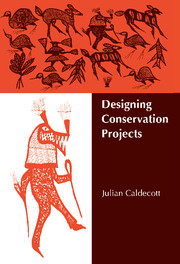Book contents
- Frontmatter
- Contents
- Foreword by Daniel H. Janzen
- Preface
- Acknowledgements
- 1 Introduction
- 2 Baram River, Sarawak
- 3 Cross River, Nigeria
- 4 Siberut and Flores Islands, Indonesia
- 5 Forest fragments in China and the Philippines
- 6 Costa Rican linkage projects
- 7 Irian Jaya, Indonesian New Guinea
- 8 Project themes and practicalities
- 9 Options for conservation
- 10 Options for development
- 11 Options for changing people's minds
- 12 Summary and conclusions
- Glossary
- Bibliography
- Index
11 - Options for changing people's minds
Published online by Cambridge University Press: 04 February 2010
- Frontmatter
- Contents
- Foreword by Daniel H. Janzen
- Preface
- Acknowledgements
- 1 Introduction
- 2 Baram River, Sarawak
- 3 Cross River, Nigeria
- 4 Siberut and Flores Islands, Indonesia
- 5 Forest fragments in China and the Philippines
- 6 Costa Rican linkage projects
- 7 Irian Jaya, Indonesian New Guinea
- 8 Project themes and practicalities
- 9 Options for conservation
- 10 Options for development
- 11 Options for changing people's minds
- 12 Summary and conclusions
- Glossary
- Bibliography
- Index
Summary
Introduction
Although wild species and people all have needs, only people are voters, investors, stakeholders, planners, and decision makers, and they may not feel inclined to care about wild species or to spend time and effort in conserving them. If so, then little is gained by studying the needs of wild species and ‘speaking for the birds’, or by advocating change in people's lives. Thus, conservation cannot only be about choosing where to put nature reserves, or how big they should be, or how many fish should be taken from rivers or deer from forests. Instead, it must involve changing people's minds.
The aim of doing so is to create a durable consensus in favour of conservation, expressed through choices in voting, spending, and consuming far into the future. Such a consensus would mean an overwhelming majority of people actively avoiding damaging nature and preventing others from doing so. This cannot be achieved against people's will, and nor can it be achieved quickly in any place where people are not already willing and able to conserve. It can be achieved eventually, however, and conservation projects should be designed with this aim in mind. They should therefore use procedures which help people make decisions about which they feel positive, and which are also ecologically sound. Some of these procedures are described below.
Tenure and incentives
Observations in Chapters 2–7 showed that the projects which had most local support, and which were most able to achieve conservation aims, were those which improved local people's security of tenure.
- Type
- Chapter
- Information
- Designing Conservation Projects , pp. 222 - 251Publisher: Cambridge University PressPrint publication year: 1996



